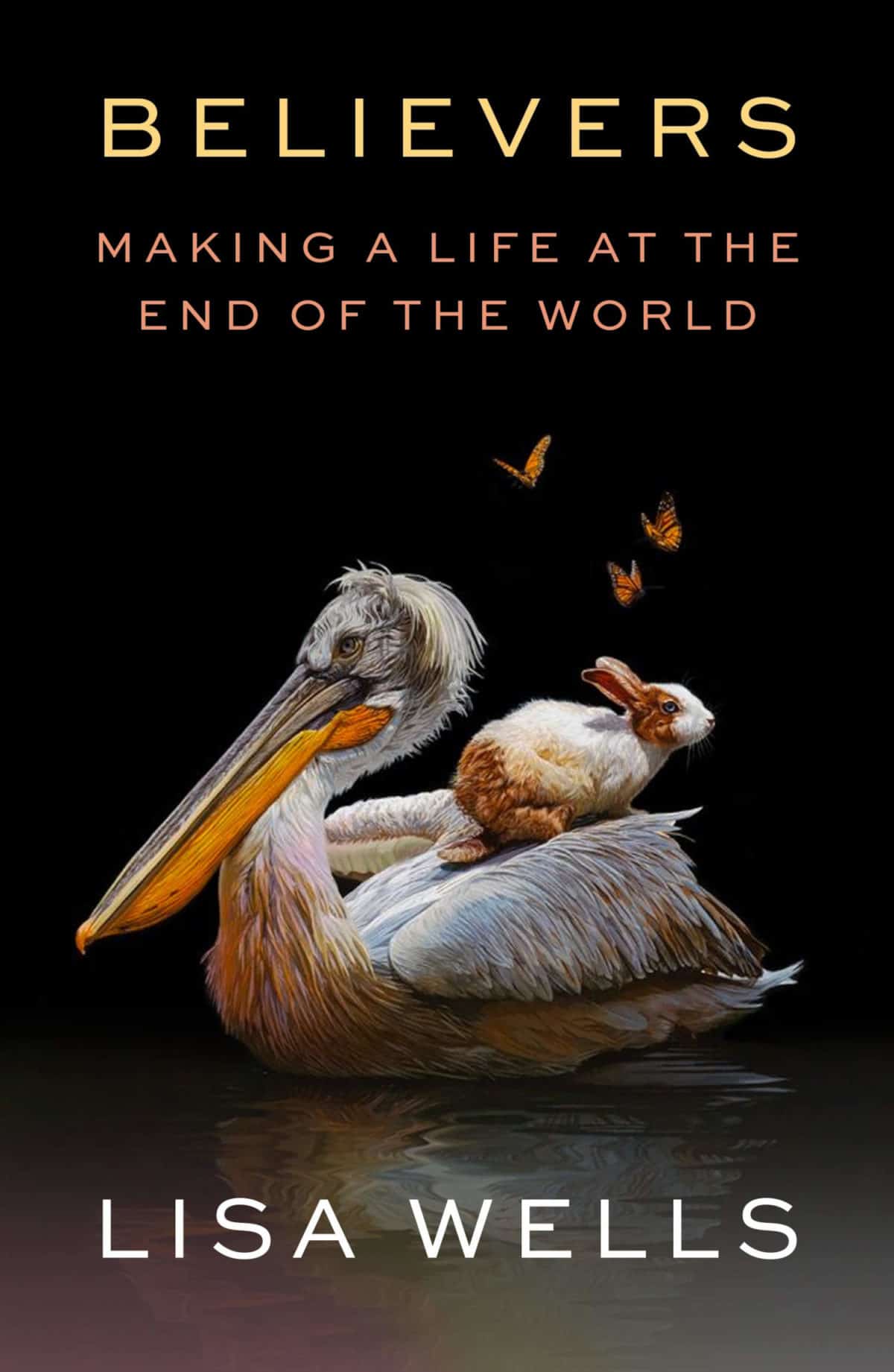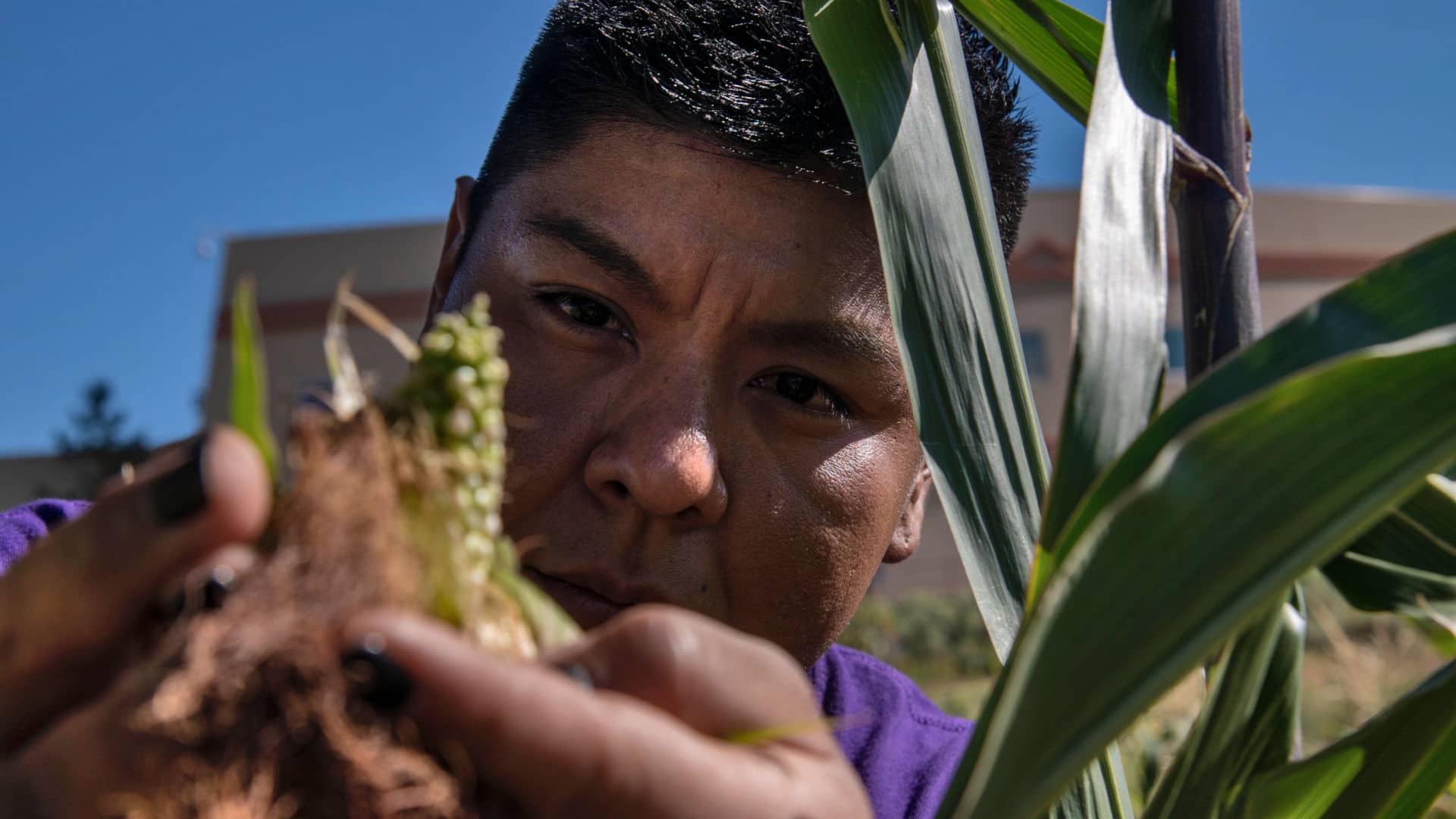According to its Greek etymology, the word apocalypse means “unveiling.” Though we associate it with disaster, thanks to its biblical associations, an apocalypse, strictly speaking, is a revelation, a disclosure of something unknown. It’s scary above all because we don’t know what’s coming, or we can’t imagine how we might live if everything were different.
As poet and essayist Lisa Wells observes in her new book “Believers: Making a Life at the End of the World,” our moment is apocalyptic because the climate crisis has revealed that the stories we tell ourselves — “of infinite growth, of survival of the fittest; the story of human supremacy” — no longer work. Alongside a crisis of engineering, biology, and politics, we face a crisis of narrative, of imagination, and, as Wells’ title suggests, of faith. Despite growing up as a crunchy radical in Portland, Oregon, where she and her friends dropped out of high school to train for societal collapse, Wells found herself in “this strange modern-day condition: that of an average, well-meaning person who daily participates—however grudgingly—in a system that is bringing the planet she loves to the brink of destruction.”

BOOK REVIEW — “Believers: Making a Life at the End of the World,” by Lisa Wells (Farrar, Straus and Giroux, 352 pages).
The problem wasn’t apathy, she says: Wells just couldn’t think beyond the state of emergency to the new way of living that would follow. “One world was ending,” she writes, “but I had no image for what would come next, and the longer I knelt on the lip of that abyss looking in, the deeper and more cryptic its darkness.”
Wells poses a question that many of us, in fits of despair and powerlessness, have also asked ourselves: “The world is burning; how, then, shall we live?” “Believers” is her attempt at an answer. Wells isn’t an expert on permaculture, survival skills, or land restoration, but she’s a skilled reporter who, in her quest for guidance, seeks out “relatively ordinary people who came to believe that their inherited way of life was destructive and so pursued a different way, each by their own methods and according to their own beliefs.”
Over eight beautifully written though sometimes meandering chapters, we meet believers from all walks of life whose creed — quite often informed by a radical, ecologically oriented Christianity — centers not on profit and consumption but rather on restoration, humility, and, in one way or another, love. Many are people whose values compelled them to leave their old lives behind and seek a more intimate, and less destructive, relationship with nature.
The love is often tough, and so are the believers. “I can’t help but notice the wrecked knees, bad backs, scars, and trauma-etched faces of the people I’ve met while writing these pages,” Wells relates. “In many cases, it was the adversity they’d survived — their very woundedness — that pressed them into the service of others.”
The book opens with its most charismatic believer, and perhaps its most wounded: Finisia Medrano, a cursing and confrontational trans woman who spent decades reviving the forgotten wild edible gardens that Native communities cultivated across the American West before its colonization. Medrano traveled on foot, horseback, and even in a covered wagon across the backcountry, first alone and then with “the Prairie Faeries,” a group of young queer people who helped her in her work.
It’s a misperception, Wells notes, citing the work of anthropologist David G. Lewis, that Native America depended mostly on animal flesh; rather, tribes in the Northwest oriented their lives around the rhythms of the wapato and camas plants, whose blue-violet blooms were so numerous that Meriwether Lewis swore in a diary entry that, at first glance, they appeared as “lakes of fine clear water.” Lewis didn’t understand that these abundant edible plants, along with the migrating flocks of passenger pigeons (now extinct) and the rivers rich with wild salmon (now largely depleted) were not “outside the reach of human hands,” Wells writes, but rather “had benefited from deliberate land management practices for generations.”
Seen in this light, Medrano’s belief in the second coming of these gardens represents a pugnacious form of anti-imperialism, one that Wells endorses and promotes throughout the book. The idea that the West was an Edenic wilderness erases the rich history of Indigenous stewardship and symbiosis. What Wells calls “the cathedral-of-wilderness mythos” — John Muir’s vision of nature as the realm of the pure and untouched — was a self-serving colonialist fiction. The “convenient and deadly misperception” of Lewis and Clark, and other early explorers, helped justify the U.S. government’s forced removal of the country’s Indigenous communities, and over time has led to modern-day Americans’ strangely alienated relationship to the land.
The myth of wilderness has also led to mismanagement, most notably in the U.S. Forest Service’s historic rejection of wildfire. In a meadow in the Sierra Nevada, Joanna Clines, a government botanist, and Ron Goode, a North Fork Mono elder, explain to Wells how they have used periodic burns to restore biodiversity. Years of annual burning, combined with careful attention from a group of volunteers, have resulted in a dramatic increase in “cultural properties”: sources of traditional foods, medicines, and craft materials. A spring, previously sucked dry by brush and conifers, started flowing again.
The goal was not restoring the meadow to some ideal state, but rather letting it live again. Goode, for example, ruffled feathers at the Forest Service by allowing invasive bull thistle to grow, pointing out that the hearty plant provides food for animals in late fall when other species have died off or gone dormant. “All the species on the meadow and in the forest are considered relatives in the tribal lifeway,” he explained in an essay he shared with Wells. Two ways of knowing — one that trades in the Latinate language of science and resists all so-called invasive species, the other that represents a more intuitive and ancient way of knowing, and looks at migrant species with curiosity — can work together if they share the same goals.
This points to the central irony of Wells’ search for a new way of life: What she’s looking for isn’t new at all. She finds the unimaginable future in the past, specifically in the way Native Americans related to the land. “What does it mean,” she asks, “to ‘go back to the land’ in a country that was never yours?” For Wells, it means learning from those who tended the land so long and so well. (Though, notably, Wells doesn’t appear to profile any Native people besides Goode.) It means rooting yourself in a specific place, like “radical disciples” attempting to “‘rewild’ their religion.” The Taos Initiative for Life Together, Wells tells us, practice “watershed discipleship,” a reorientation of religion that reads Christian scripture “through an animist lens” and makes a “covenant” with the earth: Followers cultivate their own acre of land using sustainable methods; in parallel, they work to overcome the personal habits, like internet addiction, that may alienate them from the environment.
Support Undark MagazineUndark is a non-profit, editorially independent magazine covering the complicated and often fractious intersection of science and society. If you would like to help support our journalism, please consider making a tax-deductible donation. All proceeds go directly to Undark’s editorial fund. |
Returning to the land also means abandoning abstractions and attending closely to the world in all of its concrete details, like the super-tracker Fernando Moreira, known as the “Portuguese Sherlock Holmes,” whose close relationship to the land offers, for Wells, “a method for overcoming rootlessness, a daily practice for reconnecting with our ecosystems.” Moreira teaches her to follow the “living trail,” to look closely and follow what trackers call the “spoor”: the delicate traces an animal leaves behind. “In the most basic sense, to track is to attend,” Wells tells us. “This is a form of worship, but it’s also a form of love, a method for overcoming the numbness or the disconnection that allows us to screen out the killing of the world.”
In “Believers,” turning towards nature also appears to represent a turn away from the conventional politics that have thus far failed to get much done. Public affairs loom at the edges of her narrative, yet Wells’ subjects — “the difficult, wounded, and passionate outcasts among us,” as she describes them, “ordinary mortals like me”— seem to avoid traditional means of political engagement. Though Wells interweaves the history of radical environmental activism into the memoir portions of her book, the believers she profiles are either more extreme or more escapist in their lifestyles and viewpoints, depending on how you see them.
Maybe it’s naivety. Or maybe, for mortals like us, it’s something closer to necessity. “The threats we face are overwhelming, paralyzing even, but a watershed, an ecosystem — these are limits where life can flourish,” Wells writes. “To form a covenant with an ecosystem, to restore the life within that limit — this is a manageable path for believers and skeptics alike.”
Max Norman is a freelance writer from Northern California.










